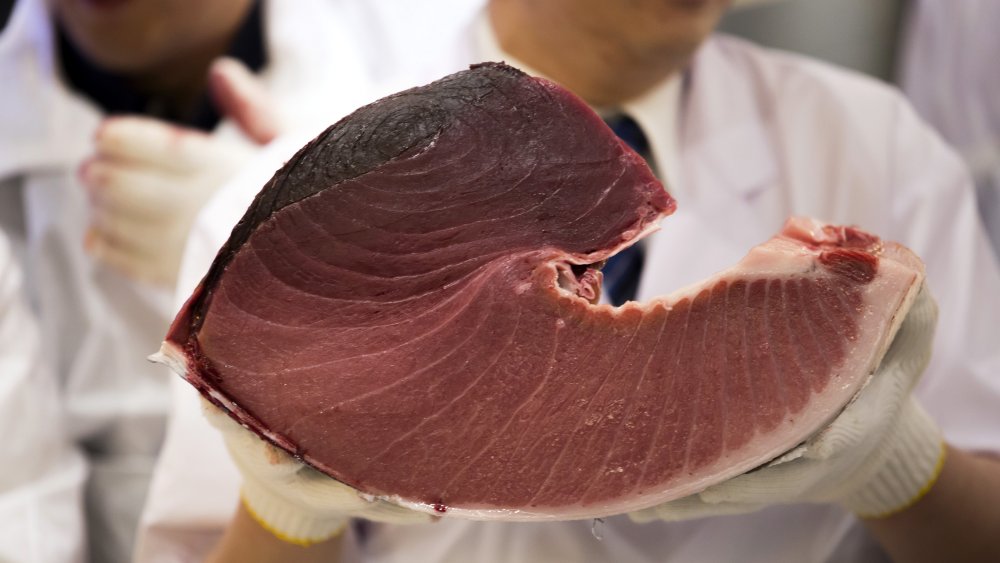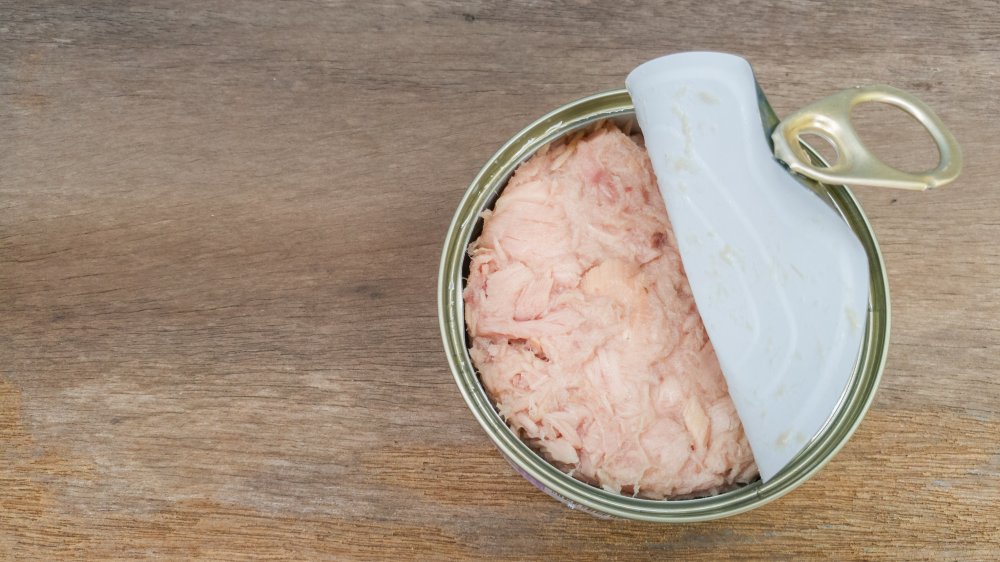Why Is Bluefin Tuna So Expensive?
Canned tuna isn't exactly an expensive fish, which is probably why it's been such a staple of sack lunches for decades. Order up some bluefin tuna at a sushi restaurant, however, and you'll almost certainly be paying a pretty penny.
The fish is reputable for commanding ridiculously outrageous prices at auctions. For example, in 2019, CNN reported that Kiyoshi Kimura, the self-proclaimed Japanese "Tuna King," paid a record-breaking $3.1 million for a 612-pound bluefin tuna. That breaks down to nearly $5,065 per pound and some seriously expensive sushi rolls!
Whether a fish is worth that much is a matter of opinion — Kimura even admitted that he overpaid — but what is it that makes bluefin tuna so incredibly pricey?
Limited supply and exporting costs drive up the price
One factor that makes bluefin tuna so expensive is the law of supply and demand, or as The Atlantic cleverly describes it — "sushinomics." To put it bluntly, there's only so much bluefin tuna in the ocean. All three species of the bluefin are overfished and the fish don't breed in captivity. Japan — the largest consumer of bluefin — has faced international criticism for its harsh fishing of bluefin. It wasn't always this way, either.
The fish didn't really become popular until after the 1970s when sushi slowly began to gain a following in the West. The fish has a fatty marbling which makes the meat from its belly incredibly prized for sushi.
Sushi expert and chef Derek Wilcox told Business Insider that Japan is simply better at handling the butchering of bluefin. It's not uncommon for bluefin caught off the United States coast to be sent to Japan before being exported to a sushi restaurant someplace else. This drives up the cost.
You won't find bluefin in the canned fish aisle of the grocery store
To the uninformed, tuna might just be tuna and the idea of paying millions for a 600-pound fish seems ludicrous. It's important to note, though, that the bluefin sushi roll you might get at a high-end sushi restaurant has very little in common with your mom's tuna salad recipe.
For starters, canned tuna is a species known as albacore or longfin tuna. They're a lot smaller than bluefin, can be farm-raised, and are much more abundant than the bluefin. Albacore might not have the marbling of bluefin, but it has the benefit of being seafood that you won't feel guilty about eating.


